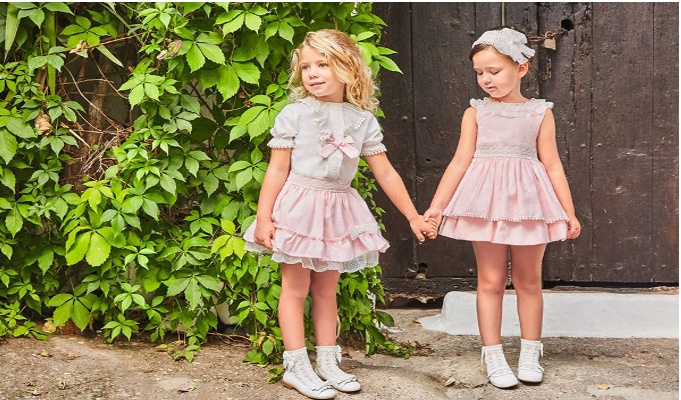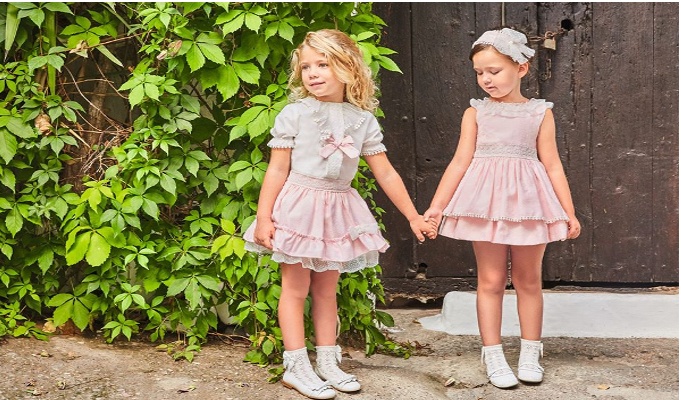
Kids’ dressing habits in India have witnessed a paradigm shift. What used to be regular, basic outfi ts a few years ago have now transformed into full fashion lines, often of premium luxury. IMAGES Business of Fashion takes a look at the market dynamics of one of the fastest growing sectors of fashion retail – kidswear.

Growth Drivers
From a basic need-based industry dominated by unorganised retail, kidswear in India has traversed a long trajectory to become an evolving fashion and style category. This paradigm shift, in the recent past has been triggered chiefly by the increase in income and changing lifestyle of modern parents; the result being a perpetual desire to keep kids in sync with latest trends.
When it comes to kidswear, India is bestowed with a long list of unique, innate advantages. Along with a promising economic outlook, the nation has the distinct advantage of a growing kids population which, coupled with an increasing discretionary spending on kids has been successful in making India the global hotspot for kidswear fashion. Today, the market for children’s fashion is fast becoming one of the most profitable segments in the entire fashion retail industry in India. The opportunities in the Indian kidswear industry has also attracted a long list of international retail bigwigs, all who have rushed in to grab their share of the market pie.
Changes in the composition and structure of Indian families have also been instrumental in boosting the growth of this industry. The rise of the nuclear family in urban India with a double income has resulted in increased disposable income and hence enhanced purchasing power, with parents willing to shell out money to buy clothes for their children. This has given immense opportunity to retailers at all levels and geographical regions to expand their market and what has largely been an unorganised retail sector is slowly organising and modernising itself at a rapid pace.
“In India, about 78 percent of the kidswear market is still unorganised and this is where the scope lies for the segment in coming years. Kidswear’s share will grow rapidly as the segment increasingly gets organised. Innumerable factors like the average age of the India population, global exposure, spending power and increasing number of working women will influence the Indian kidswear market to a large extent in coming years,” says Kavita Mallick, Head of Business, MiniKlub.
Modern parents and children are much more aware and conscious of what they are wearing and how they look when they step out of the house. Along with the growth in India’s purchasing power, there has been a steady rise in the number of image conscious parents who want to dress their children as per their definitions of fashion.
“The kidswear market in India has witnessed seismic changes in the last few years – both product and consumer wise. The growth of the kidswear category is primarily due to an increase in the income and changing lifestyle of modern parents – parents want their kids to stay on trend. This has given retailers an opportunity to expand their market across various geographies and demographics. Changes in the composition and structure of Indian families have also been instrumental in boosting the growth of this industry. The rise of the nuclear family in urban India has resulted in increased purchasing power, with parents now willing to spend more,” reveals Manish Kapoor, Chief Business Officer, Pepe Jeans India.
Frequent socialising and the influence of Social Media – facilitated by the penetration of the Internet in the country – too has been instrumental in bolstering the aspirations of progressive parents, which in turn has helped the entire segment with impetus.
“Additionally, with changing lifestyles, there is also a need-based demand stemming from more frequent socialising amongst new age parents. Movies/music and easy to access social media platform are also influencing their tastes. As families travel often and have increased fashion awareness, the tastes of parents and kids are evolving,” adds Manish Kapoor.
Kids are Decision Makers
Parents’ brand awareness and inclination towards high quality apparel has even trickled down to the kids as well, who have now emerged as a new independent buyer group altogether. The modern generation of kids is no more like their erstwhile peers; they are righteously more demanding and exhibits an increasing say in purchase decisions.
“Children today are increasingly becoming aware of their needs, prevailing trends and have their own say when it comes to buying decisions. They are perhaps more demanding and are not interested in merely functional outfits or hand me downs from older siblings. Kids as young as three years are not only curious about fashion choices but also like to have a say on what they would like to wear. This evolution of kids as consumers have changed the way brands perceived and operated in this space and has given way for newer trends – the Mini Me trend and character-based apparel being the foremost,” says Manish Kapoor.
Echoing similar sentiments Kavita Mallick states that kids cross the age group of 5-6 years are actively influencing the purchase decision all across the globe. Alok Dubey, CEO, Lifestyle Brands Division, Arvind Lifestyle Brands Limited – the Indian partners of The Children’s Place, the largest pure-play children’s specialty apparel retailer in North America – credits this awareness to the rampant penetration of mass media.
“Today’s kids are smart and are highly aware about the latest trends. They are outspoken in their wants and needs and fashion is no exception. The advent of TV and mobiles has exposed them to the latest styles and owing to greater purchasing power, parents have no qualms in complying with these needs,” he explains.
This evolution of kids as consumers have changed the way brands perceived and operated in this space and has given way for newer trends.
A Pricing Sensitive Segment
India has always been a price sensitive market and this disposition has never been more apparent than when consuming kidswear. Kids outgrow their clothes considerably fast and hence, parents have always preferred to stick to the southern end of the price spectrum.
“Indian market is a price sensitive one. Our pricing strategy definitely takes this into consideration. We consider The Children’s Place as a masstige brand and ensure that there’s something available for everyone at our stores. The starting price of our products is Rs 399 and we intend to keep the pricing inclusive to all,” confirm Alok Dubey.
“Yes absolutely, India is a price sensitive market and especially in kidswear, we have noticed that price sensitivity among parents changes as per kid’s age. Nevertheless, we have to ensure affordable product pricing for our consumers. We off er multi-pack for infants to add value to purchase and off er sets and single to make it affordable for babies and kids range,” says,” Kavita Mallick.
Predatory pricing and deep discounting has, without a doubt, heralded a thorough transformation in India’s consumer landscape in the recent years. The feeding frenzy that deals, sales coupons, app discounts, et al., has become today stands as a testimony to the monumental influence of discounting as a strategy in India. And for new and emerging players in the game, the proverbial race to off er the lowest price possible has now become a tradition.
“Parents are definitely discount conscious. The recent e-commercetrend of deep discounting has made the customer attuned to promotions and off ers. That being said, given the rise of image conscious middle-class parents, we’ve seen great response and increased sales during non-promotion period too, i.e., season launch or new collection launch as well,” affirms Alok Dubey.
Entry of International Brands
This promising nature of the kidswear segment has attracted many international brands into India. And considering the fact that an inherent part of an Indian’s genetic makeup is his affinity towards ‘anything foreign’, we can only wonder what it is for domestic businesses at the butt end of this uncanny phenomenon.
“International brands are able to off er better quality, globally trending styles and aspirational products to customers at great prices. These factors have contributed to greater affinity towards international brands. In order to grow, domestic brands will have to focus on quality, designs and pricing to compete against international players,” states Alok Dubey.
On the other hand, most domestic brands have the advantage of understanding the country’s climatic conditions and an appreciation of regional choices. “Home grown brands always leverage on the understanding that they have of the diverse taste of the Indian consumer. This is always is an advantage and can potentially be a big differentiator in winning the market,” says Kavita Mallick.
A fair section of experts also believe that the entry of these brands has been instrumental in high expansion of the overall market and bolstering efficiencies of the domestic players. And, of course, the biggest beneficiary has been the Indian consumer, who, over the long term, will get better quality products at lower prices in a better shopping environment.
“Absolutely! These international brands have pushed homegrown brands to up their game to compete with them thereby helping the market flourish as a whole,” adds Kavita Mallick.
Conclusion
In this digital age, small clothes have proven to be big business. Owing to the growth potential of the kidswear segment, many international brands have entered India in last few years.With emergence of e-commerce, markets that were unknown or unreachable have opened up, thus boosting growth of kidswear in India. As kids are graduating into consumers earlier than before, brands now increasingly want to shimmy up to them, engendering hitherto unseen growth opportunities for all players across the sector – right from brand owners, suppliers, to distributors and retailers. Brands that are steadfast on getting it right will have to do so with the right product assortment, distribution channels, better visual merchandising, and focused advertising and promotional strategies.


